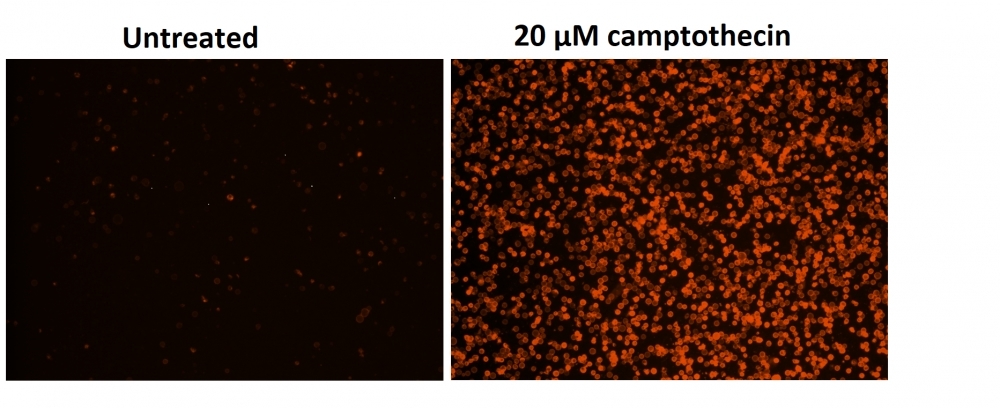Cell Meter™ Phosphatidylserine Apoptosis Assay Kit
Orange Fluorescence Optimized for Microplate Readers
This particular kit is designed to monitor cell apoptosis through measuring the translocation of phosphatidylserine (PS). In apoptosis, PS is transferred to the outer leaflet of the plasma membrane. The appearance of phosphatidylserine on the cell surface is a universal indicator of the initial/intermediate stages of cell apoptosis and can be detected before morphological changes can be observed. This kit uses our proprietary orange fluorescent Apopxin™ PS sensor that specifically binds PS with affinity much higher than Annexin V (Kd < 10 nM). The PS sensor used in this kit has orange fluorescence upon binding to membrane PS. The stain has the spectral properties almost identical to those of Cy3® or Alexa Fluor® 555, making it convenient to be used for the common fluorescence instruments equipped with the light sources and filters for Cy3® or Alexa Fluor® 555 (Cy3® or Alexa Fluor® 555 are the trademarks of GE Healthcare and Invitrogen respectively). Due to its highly enhanced affinity to PS, this kit is more robust than the other commercial Annexin V-based apoptosis kits that are only used with either microscope or flow cytometry platform. This kit can be also used with a fluorescence microplate reader besides the microscope and flow cytometry platforms.


| Catalog | Size | Price | Quantity |
|---|---|---|---|
| 22794 | 100 Tests | Price |
Storage, safety and handling
| H-phrase | H303, H313, H333 |
| Hazard symbol | XN |
| Intended use | Research Use Only (RUO) |
| R-phrase | R20, R21, R22 |
| UNSPSC | 12352200 |
Instrument settings
| Fluorescence microplate reader | |
| Excitation | 540 nm |
| Emission | 590 nm |
| Cutoff | 570 nm |
| Recommended plate | Black wall/clear bottom |
| Instrument specification(s) | Bottom read mode |
Contact us
| Telephone | |
| Fax | |
| sales@aatbio.com | |
| International | See distributors |
| Bulk request | Inquire |
| Custom size | Inquire |
| Technical Support | Contact us |
| Request quotation | Request |
| Purchase order | Send to sales@aatbio.com |
| Shipping | Standard overnight for United States, inquire for international |
Page updated on January 8, 2026
